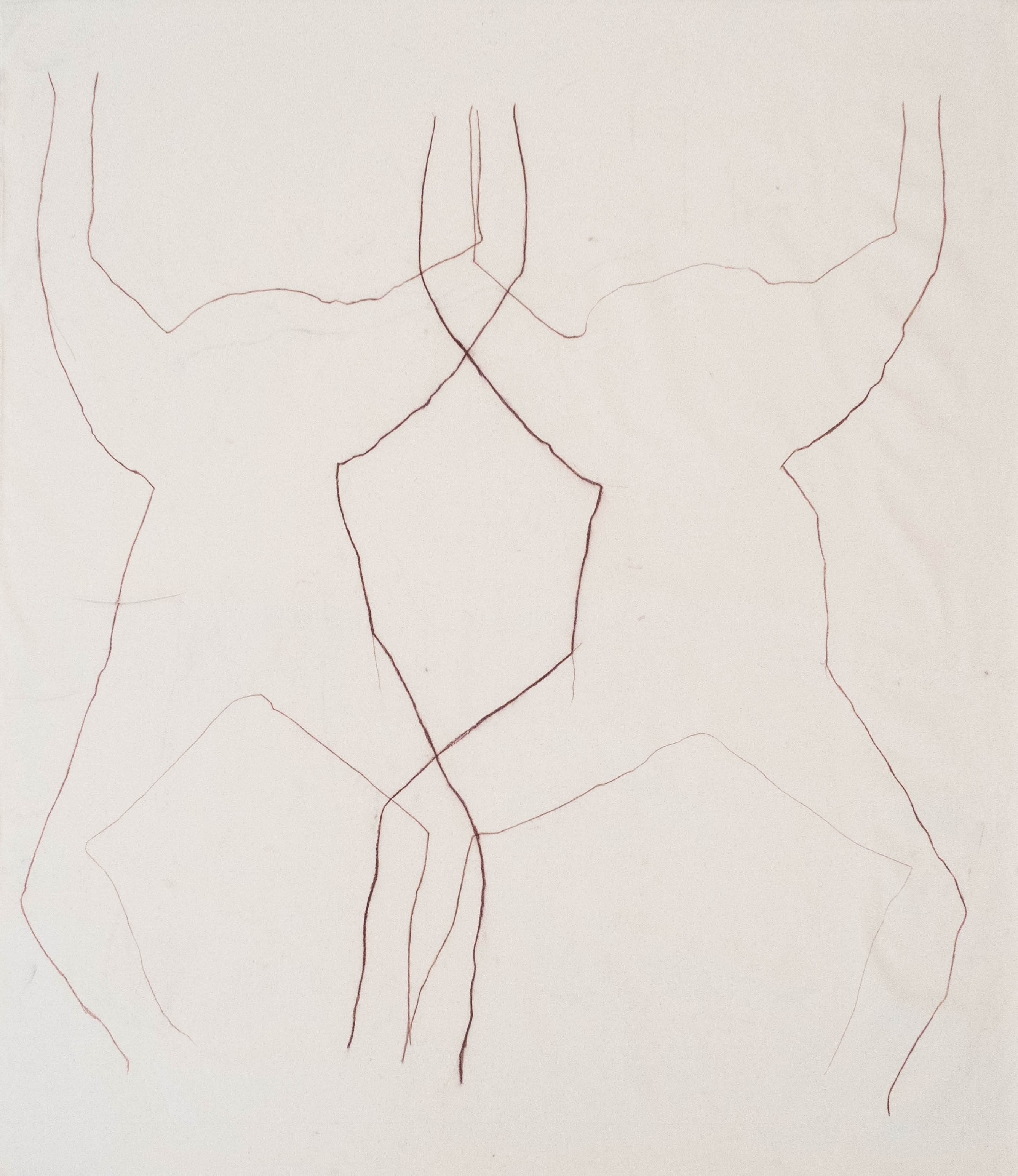The process of these outlines is a literal one, that searches for the middle point of view between the as it is and the as it is perceived through the flattening of volume. The outlines delineate space, and simplify it in this way. They are reductions and traces of volume. At the same time, they are lines – directly related to touch.
When making the work I stand on the canvas which rests on the floor. The first instinct is to join its rest and feel my body as I feel the woven-ness of the fabric. Something tight which lets air go through it. We are impermeable as a rain coat unless we consider our entrances as such. There is a procession letting the environment touch us from the inside.
Air has its way of entering us and I search for a way to do the same. As if oxygen would go anywhere but the lungs, that is how it feels. Organs touch each other, organs share space which I tend to feel. Overwhelmingness which forces me to stop the outside and continue on the inside. I feel them be when I cannot feel my hands anymore.
“It is the body and it alone, because it is a two-dimensional being, that can bring us to the things themselves, which are themselves not flat beings but beings in depth, inaccessible to a subject that would survey them from above, open to him alone that, if it be possible, would coexist with them in the same world.”
Merleau-Ponty, Maurice. The Visible and the Invisible, Northwestern University Press, 1968. 136
The acts are attempts of sensing the edges of the body.
If felt, they make apparent through contrast, the difference between the body and its environment. The difference is the space between the two. The space which I have reduced to a line. The line is, in this document, a reduced interpretation of the space that outlines characters of/and the world. Its application in the drawings comes in sizes proportional to the hand or to the body, firstly as a tracing of investigatory movements and poses, and afterwards as assumed lines, thought of and chosen. Often chosen by re-assuming the traced position and sensing points of bodily tension.





